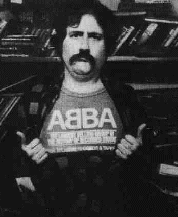
Last Thurday the University of Delaware hosted a meeting of minds. David Plouffe and Steve Schmidt, the two strategists for, respectively, the Obama and McCain campaigns, went head-to-head.
And found agreement.
The meeting is widely reported by:
- Delawareonline, the Web presence of the local Wilmington News Journal
- Politico (which seems the fullest account)
- The Washington Post (an excellent piece by Dana Milbank)
- and USA Today for MSN, pirating those first-hand accounts.
Schmidt seemed to be the more candid, taking his cue from Kris Kristofferson:
Freedom's just another word for nothin' left to loseOK, while we're on that aside, since it's the weekend, let's do it properly:
Yeah: it's a real man's song, but Janis made the distance. There's a fine rendition by the man himself on YouTube (but embedding disabled).
Schmidt on the Obama campaign:
“This was, in my view, the unfinished Bobby Kennedy campaign – the idealism, the passion, the inspiration he gave to people, it was organic and it was real and it wasn’t manufactured at a tactical level in the campaign.”That's not an original thought: the Obama rail-journey to the Inauguration, claimed to be recreating the arrival of Lincoln in 1861, looks like the joyous recreation of Robert Kennedy's funereal train. Put Paul Fusco's 1968 photographs alongside those of 2009: the synthesis is powerful.
Obama's campaign, which means Plouffe, was mining a rich political seam. The bed rock was Abraham Lincoln in 1861: a photo-essay by Carrie Shell for the current issue of Time makes that point:

The best image, a double-page spread, again through the Oval Office window, of Obama at his desk, with the Lincoln portrait (as above) on the left wall, seems not to be in the on-line gallery.
Schmidt's comment on the symbolic completion of the Bobby Kennedy campaign is a further element. One of the tracks Malcolm keeps on his iPod is John Stewart's elegy for The Last Campaign:

It more than Indiana,Ever since 1968 the Democratic pretender has attempted to reprise that enthusiasm. Only in 2008 did the road lead to the nomination.
It was more than South Dakota,
It was more than California,
It was more than Oregon,
It was a race against time,
It was always on our mind:
And he died on the road ...
Collapse of stout Party
Schmidt's candid confession also included his frank appraisal of the state of the Republican Party:
"It is near-extinct in many ways in the Northeast, it is extinct in many ways on the West Coast, and it is endangered in the Mountain West, increasingly endangered in the Southwest . . . and if you look at the state of the party, it is a shrinking entity."He further conceded that, had it not been for McCain as the "favorite son", Arizona would have gone to Obama.
He obviously regards the nomination of Sarah Palin as an unmitigated disaster:
He recounted the frustrations and desperation of the campaign, culminating with the decision that insiders continue to debate: To nominate Alaska Gov. Sarah Palin, rather than McCain’s first choice, Connecticut Senator Joe Lieberman, for vice president.On that basis, it looks good for Democrats, all the way to 2012, and beyond. Sphere: Related Content
After taking soundings on Lieberman, Schmidt said, “It was communicated back to us very clearly from within the party that not only was Senator Lieberman not acceptable, but any pro-choice nominee was not acceptable, [and] it would lead to a floor fight at the convention with an alternate nominee for Vice President put into play.”
“Blowing up the party wasn’t one of the menu items of things that were going to improve our situation,” he said.


























